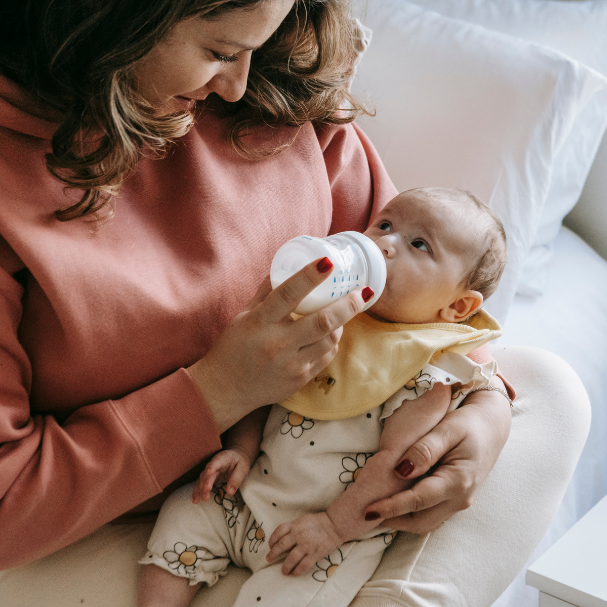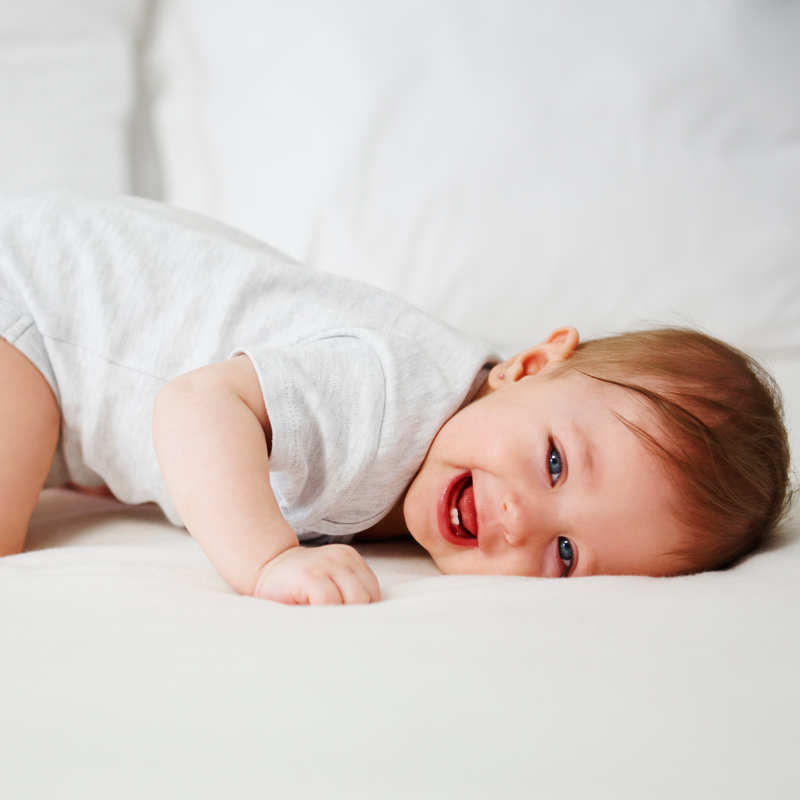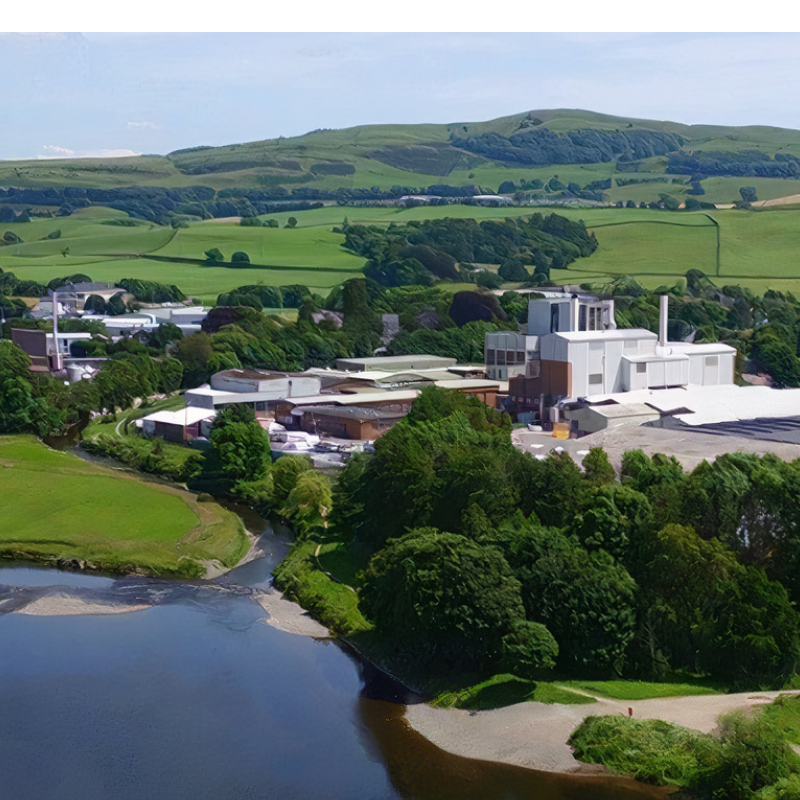
As you are likely learning as a parent, your little one is full of surprises – and there’s plenty more in store! We asked Kendamil Feeding Expert Katie Hilton to share her most fascinating newborn facts, so read on to learn more!
-
They have no kneecaps
Yes, you heard me right! Babies are in fact born without any kneecaps – they have a structure made of cartilage that resembles a kneecap, but they don’t fully develop until around 6 months of age.
-
Babies born in May are the heaviest
Most people assume that babies born in January will be the heaviest because of all the feasting over Christmas and New Year. But research has shown that babies during the month of May are the heaviest, weighing around a ¼ lb more than babies born in any other month of the year.
-
Newborn babies have no tears
Whilst your baby will howl and scream to get what they want or need, they won’t theoretically cry. Newborn babies are unable to produce tears until around three weeks of age – this is because their tear ducts are not fully developed at birth. They will always produce moisture to keep the eyes well lubricated and healthy, but there will be no proper tears shed at least for the first 3-4 weeks. Phew!
-
Babies are born with 300 bones
Babies are born with almost 50% more bones than that of adults. The reason? A number of these bones fuse together during the first several years, bringing the total bones down to 206. For example, the skull of a newborn baby has several bones which overlap, creating what are known as fontanelles (or soft spots), which fuse together over the first 18 months of life. This overlapping of bones also helps the baby pass easier through the pelvis during birth. Thanks, Mother Nature!
-
Most babies have a birthmark
Most people consider a birthmark an abnormality, but they’re totally normal – in fact, about 10% of babies are born with some sort of birthmark, known as a hemangioma. The most common types being a ‘stork bite’ or ‘port wine stain’. Most birthmarks are caused by tiny blood vessels under the skin becoming dilated during labor and usually disappear after a few years.
-
Babies’ hair falls out
Don’t become too attached to that thick head of hair your baby was born with! Newborns tend to lose the hair they are born with during the first few weeks of birth. While it will gradually grow back over the first year, there’s no guarantee it will be the same as before.
-
Babies have impressive reflexes
A newborn baby is born with around 70 reflexes. For example, if you hold your baby upright with his feet on a flat surface, his legs will do a stepping motion. Of course, your baby can’t walk right now, but the knowledge of how to walk is born as a primitive reflex in your baby. Have you noticed that your baby jumps a lot? This is a reflex known as a ‘moro’, or startle reflex, which is a natural response all babies have to a loud noise. When this reflex occurs, you will see your baby startle and put his arms up and out, whilst bringing up his knees. A lot of these reflexes will either develop or become more integrated as your little one develops and grows.
-
Babies are always sleepy
You might have noticed that your baby is either always sleeping or looks sleepy. During the first few years of life, your baby will only be alert for around three minutes in each hour during the day (and even less during the night). A baby’s brain which is absorbing so much information in these first few years will use up most of the glucose supplies in the body, which explains why your baby needs so much sleep!
-
Time to smile
Your baby will start to smile somewhere between 6-8 weeks of age. When you hit this age you can try to make your baby smile with funny faces or voices.
-
Your baby knows your taste in music
Research has demonstrated that your baby recognizes your taste in music. From around four months into your pregnancy, your baby is able to hear sounds and music, so you might find that music you played frequently during your pregnancy helps to calm your baby after delivery.
-
Lots of taste buds
A baby has three times the amount of taste buds us adults have; to be exact they have around 10,000! Babies start to develop taste buds all around the mouth during the last trimester of pregnancy. Some researchers suggest eating a range of different foods during the third trimester to help pass these varied tastes onto your baby (which in turn, could lead to less fussy infants when starting the weaning process).
-
Lots of laughs
Did you know your baby laughs around 300 times each day? Compare that to the 60 times we laugh each day as adults and it’s easy to see why they’re so happy!
-
Babies have accents
That’s right, your baby has an accent! Research has shown that babies pick up their mother’s accent during the third trimester of pregnancy and this accent is even reflected in how a baby cries after birth!
-
Baby girls have periods
During pregnancy a baby shares their mother’s hormones. Following birth, some of these hormones will still remain in their body. Because of this baby girls shed their uterine lining which can result in a mini period. Both baby girls and baby boys can also lactate a little.
-
Babies can swallow and breathe at the same time
Have you ever noticed when feeding your baby that he can drink his bottle without stopping? This is because your baby has the unique ability to swallow and breathe at the same time until around 7 months of age. If your baby gets a cold or a blocked nose they lose this unique ability, which is why they can get so miserable and refuse to feed during this period.
-
Changing Eye Color
There are more babies born with brown eyes than blue, but a lot of this will depend on baby's genetics. For most babies their true eye color will be evident from around 6 months of age.
-
Babies are out of proportion
Have you noticed how out of proportion your baby’s body appears? This is because at birth, your baby’s head makes up around a quarter of its total length and the brain actually makes up 10% of its total body weight. Don’t worry though, the rest of his body will quickly grow to catch up!
-
Quickly growing
Your little one is going to be growing a lot during the first few years of life, in fact he or she will quadruple in size, while in just the first 6 months they will double in weight. After the first 2 years the speed of growth will start to slow down – after all, we wouldn’t want your baby continuing to grow at this speed!
If you would like to learn more about Kendamil’s product range, please click here.














